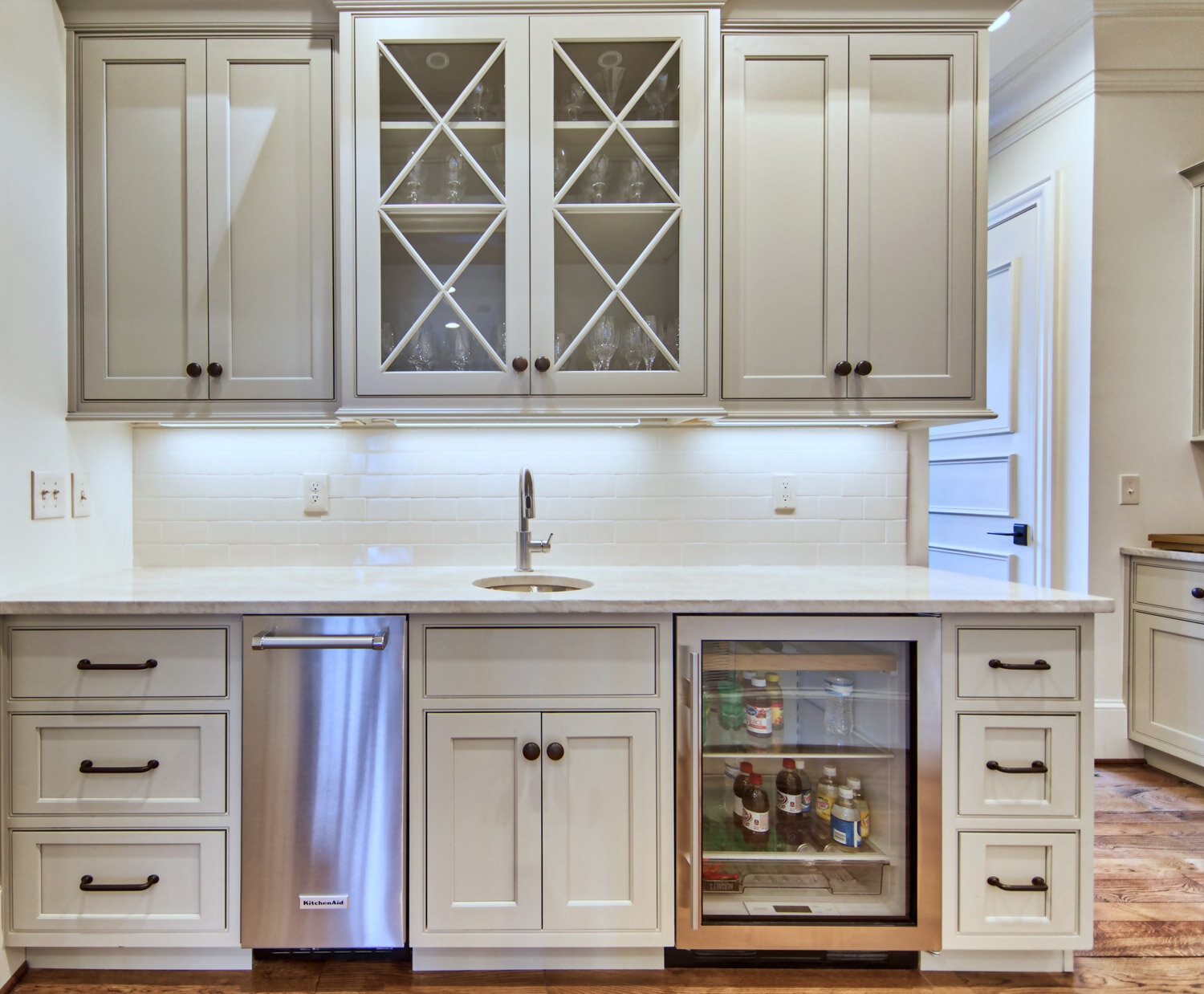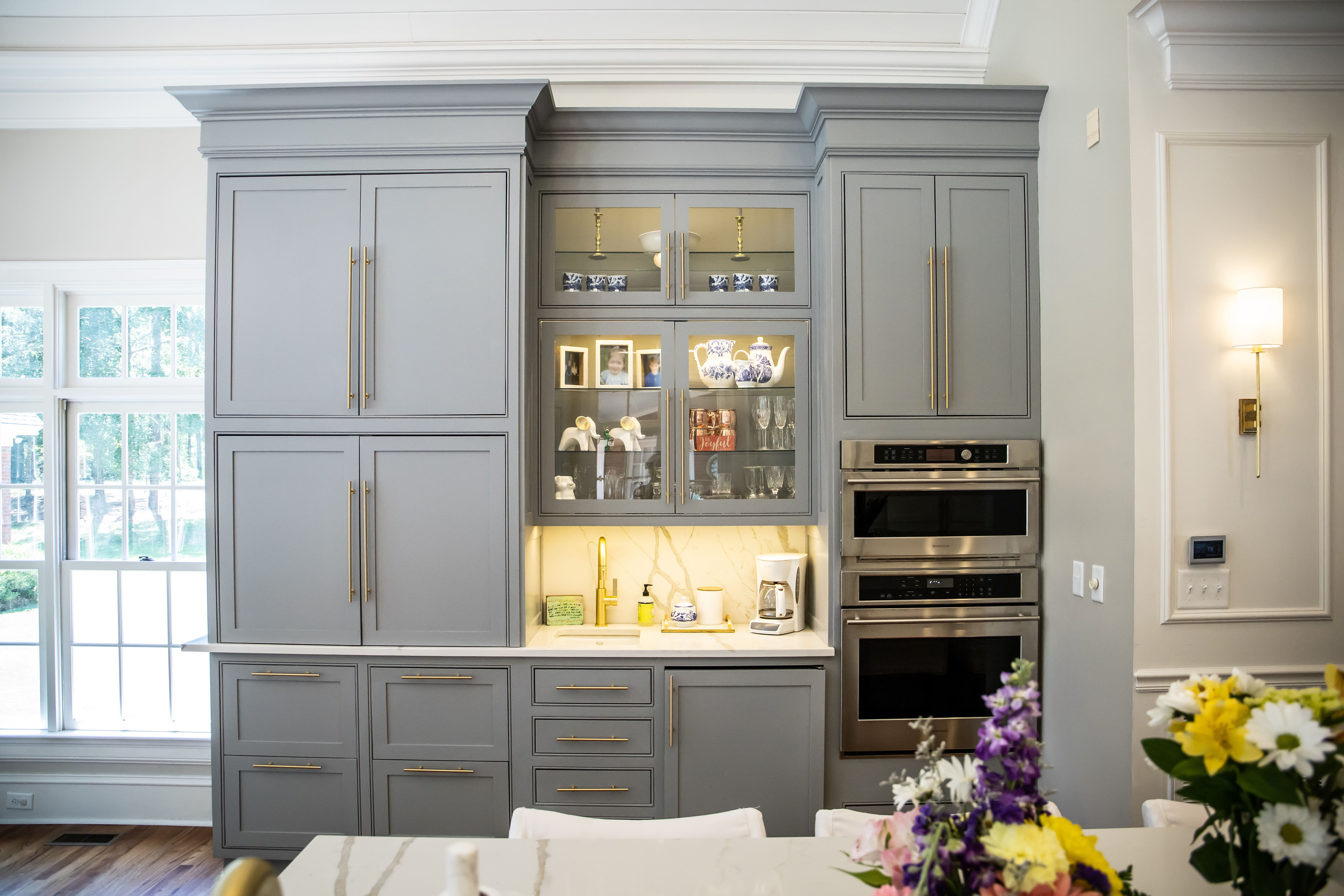Styles and Materials of Beautiful Kitchen Cabinet Doors

The aesthetic and functional success of a kitchen hinges significantly on the choice of cabinet doors. The material, finish, and style profoundly impact the overall look and longevity of the space. This exploration delves into the diverse options available, examining their strengths and weaknesses to aid in informed decision-making.
Popular Wood Types for Kitchen Cabinet Doors
The selection of wood for kitchen cabinet doors presents a spectrum of choices, each with distinct characteristics influencing durability, maintenance, and visual appeal. The grain pattern, inherent strength, and susceptibility to moisture are key factors to consider.
| Wood Type | Grain Pattern | Durability | Maintenance |
|---|---|---|---|
| Oak | Prominent, open grain; often features a cathedral pattern. | Highly durable, resistant to wear and tear. | Requires regular oiling or sealing to maintain its finish and protect against moisture. |
| Cherry | Fine, even grain with subtle variations in color. | Moderately durable; susceptible to scratches and dents. | Regular polishing and occasional refinishing may be needed. |
| Maple | Fine, tight grain; often has a smooth, uniform appearance. | Very durable and resistant to dents; can be easily refinished. | Relatively low-maintenance; occasional cleaning is sufficient. |
| Walnut | Rich, distinctive grain pattern with dark brown hues. | Durable and resistant to scratches; naturally oily, providing some water resistance. | Regular dusting and occasional polishing will maintain its luster. |
Paint Finishes and Stain Options for Kitchen Cabinet Doors
The finish applied to kitchen cabinet doors significantly influences their visual appeal, longevity, and ease of maintenance. Paints offer versatility in color, while stains highlight the natural beauty of the wood.
Beautiful kitchen cabinet doors – The following Artikels the advantages and disadvantages of various paint and stain finishes:
- Semi-gloss Paint:
- Pros: Durable, easy to clean, resists scratches and moisture.
- Cons: Can show imperfections in the underlying surface; less forgiving of flaws.
- High-gloss Paint:
- Pros: Extremely durable, very easy to clean, creates a sleek, modern look.
- Cons: Shows every imperfection; can appear overly shiny for some styles.
- Matte Paint:
- Pros: Hides imperfections well, creates a sophisticated, understated look.
- Cons: Less durable than gloss finishes; requires more frequent cleaning.
- Oil-Based Stain:
- Pros: Deep penetration into the wood, enhancing its natural beauty; durable and water-resistant.
- Cons: Strong odor during application; requires longer drying time.
- Water-Based Stain:
- Pros: Low odor, quick drying time, easy cleanup.
- Cons: Less durable than oil-based stains; may require more coats for deep color.
Alternative Materials for Kitchen Cabinet Doors
Beyond wood, a range of materials offers unique aesthetic and practical advantages for kitchen cabinet doors. Each presents a distinct profile in terms of style, durability, and cost.
| Material | Advantages | Disadvantages |
|---|---|---|
| Glass | Adds light and visual interest; creates a contemporary or traditional feel depending on the style. | Can be fragile; requires careful handling; may not be suitable for all kitchen styles. |
| Metal (Aluminum, Stainless Steel) | Durable, resistant to moisture and scratches; offers a modern, industrial aesthetic. | Can be expensive; may require specialized installation; can dent or scratch if not handled carefully. |
| Laminate | Affordable, durable, easy to clean; comes in a wide variety of colors and patterns. | Can be susceptible to chipping or peeling at the edges; lacks the natural beauty of wood. |
Design Trends and Inspirations for Beautiful Kitchen Cabinet Doors

The kitchen, often considered the heart of the home, finds its aesthetic soul profoundly shaped by the design of its cabinetry. Cabinet doors, in particular, serve as the canvas upon which style and functionality converge, dictating the overall mood and character of the space. Understanding current design trends and drawing inspiration from diverse aesthetics is crucial for creating a kitchen that is both visually stunning and practically efficient.
Kitchen Cabinet Door Styles for Diverse Aesthetics
The selection of kitchen cabinet doors is a pivotal design decision, heavily influenced by the desired aesthetic. Different styles evoke distinct moods and cater to specific tastes. Careful consideration of door panel type, hardware, and color palette is essential to achieving a cohesive and impactful look.
Modern Kitchen: Sleek, minimalist lines define the modern kitchen. Flat-panel cabinet doors, often crafted from high-gloss lacquer or matte-finish materials like thermofoil, create a sense of clean sophistication. Integrated handles or minimalist bar pulls maintain the streamlined aesthetic. Color palettes frequently feature neutral tones such as white, gray, or black, occasionally punctuated with a bold accent color. The overall effect is one of understated elegance and refined simplicity.
Farmhouse Kitchen: Rustic charm and warmth are hallmarks of the farmhouse style. Raised-panel cabinet doors, typically constructed from wood such as oak or pine, contribute to the homey atmosphere. Distressed finishes or painted surfaces add character and texture. Hardware choices often include antique brass or brushed nickel knobs and pulls. Color palettes frequently incorporate creamy whites, muted blues, and greens, reflecting the natural beauty of the surrounding landscape. The overall feeling is one of comfortable sophistication and timeless appeal.
Traditional Kitchen: Rich details and classic elegance are characteristic of traditional kitchens. Raised-panel or beaded-inset cabinet doors, often made from solid wood with ornate carvings or molding, create a sense of grandeur. Ornate hardware, such as cup pulls or decorative knobs in polished brass or nickel, complements the intricate detailing. Color palettes often incorporate warm, rich tones such as cream, beige, or deep browns, creating a sophisticated and timeless environment. The overall effect is one of refined luxury and enduring style.
Minimalist Kitchen: Clean lines and uncluttered spaces are paramount in minimalist design. Flat-panel or shaker-style cabinet doors, crafted from simple materials in neutral colors, maintain a sense of visual calm. Recessed handles or lack of visible hardware further emphasizes the uncluttered aesthetic. Color palettes typically feature monochromatic schemes, often incorporating shades of white, gray, or beige. The overall impression is one of serenity and functional simplicity.
Innovative Design Features in Kitchen Cabinet Doors
Beyond the fundamental styles, innovative design features elevate kitchen cabinet doors to new levels of visual impact and functionality.
Unique Hardware: The strategic selection of hardware can significantly impact the overall aesthetic. Consider incorporating handcrafted ceramic knobs, sleek metal pulls with geometric designs, or even repurposed antique hardware for a distinctive touch. These details add personality and can become focal points within the design. For instance, large, statement pulls can add a touch of modern drama to minimalist cabinetry, while delicate porcelain knobs can add a touch of vintage charm to a traditional design.
Inset Designs: Inset cabinet doors, where the door is mounted within the frame rather than overlaying it, create a seamless and sophisticated appearance. This design element adds a touch of refined elegance, especially effective in traditional or transitional kitchen styles. The flush look contributes to a sense of clean lines and understated luxury, particularly when combined with simple hardware.
Glass Inserts: Glass inserts in cabinet doors add a touch of visual interest and functionality. Frosted glass can offer a subtle diffusion of light, while clear glass showcases beautiful dishware or glassware. This feature is particularly useful in kitchens with limited natural light, allowing light to penetrate and brighten the space. The use of textured or patterned glass can further enhance the aesthetic appeal, adding a layer of visual depth and complexity.
Comparison of Door Panel Styles
The choice of door panel style significantly influences the overall look and feel of the kitchen. Each style possesses unique characteristics that lend themselves to different aesthetics and spatial contexts.
| Door Panel Style | Description | Suitability |
|---|---|---|
| Raised Panel | Features a raised center panel surrounded by a frame. | Traditional, Farmhouse, Transitional |
| Flat Panel | Simple, smooth surface with no raised or recessed features. | Modern, Minimalist, Contemporary |
| Shaker Style | Features a recessed center panel with a raised frame. | Transitional, Farmhouse, Modern |
Creating and Maintaining Beautiful Kitchen Cabinet Doors
The enduring beauty of your kitchen hinges, quite literally, on the condition of your cabinet doors. Proper care and maintenance are crucial not only for preserving their aesthetic appeal but also for extending their lifespan, safeguarding your investment. Understanding the specific needs of different materials and addressing common issues proactively will ensure your kitchen remains a source of pride for years to come.
Cabinet Door Cleaning Methods
The cleaning method for your kitchen cabinet doors should always align with the material from which they are constructed. Using the wrong cleaning solution can lead to irreversible damage, dulling the finish or even causing warping. Therefore, selecting the appropriate cleaning agent is paramount.
- Wood: Dust regularly with a soft cloth or microfiber duster. For deeper cleaning, use a damp (not wet) cloth with a mild dish soap solution. Always dry thoroughly to prevent water damage. Avoid abrasive cleaners and excessive moisture.
- Laminate: Laminate is relatively low-maintenance. Wipe clean with a damp cloth and mild detergent. Avoid harsh chemicals or abrasive pads, which can scratch the surface. A glass cleaner can be used for a streak-free shine.
- Thermofoil: Similar to laminate, thermofoil is durable and easy to clean. Use a damp cloth and mild soap, ensuring thorough drying. Avoid harsh chemicals and abrasive cleaners.
- Painted: Use a damp cloth with a mild soap solution. Avoid abrasive cleaners, as these can damage the paint finish. For stubborn stains, a magic eraser can be gently used, but always test it in an inconspicuous area first.
Common Cabinet Door Issues and Repair Methods
Several factors can contribute to the deterioration of kitchen cabinet doors, impacting their visual appeal and overall value. Addressing these issues promptly can prevent minor problems from escalating into costly repairs.
| Issue | Cause | Repair Method |
|---|---|---|
| Scratches | Everyday wear and tear, impacts | For minor scratches on wood, use wood filler and touch-up paint. For laminate, try a furniture repair marker. Deeper scratches may require professional refinishing. |
| Dents | Impacts, dropped objects | Wood dents can sometimes be lifted using a damp cloth and heat from a hair dryer. For more significant dents, wood filler may be necessary. Laminate dents are often difficult to repair and may require replacement. |
| Fading | Sun exposure, UV damage | Limit direct sunlight exposure with curtains or blinds. Repainting or refinishing may be necessary for severe fading. |
| Warping | Exposure to moisture, temperature fluctuations | Prevention is key. Ensure proper ventilation in the kitchen. Severe warping usually requires replacement. |
Choosing the Right Cabinet Hardware, Beautiful kitchen cabinet doors
Cabinet hardware significantly influences the overall aesthetic of your kitchen. The selection should complement the style of your cabinet doors and the overall design scheme of the room. Consider material, finish, and size for optimal visual harmony.
- Knobs: Suitable for shaker-style cabinets and other simpler designs. Consider materials like ceramic, metal (brass, nickel, chrome), or glass.
- Pulls: Offer a more contemporary feel and are ideal for larger doors or drawers. Available in various styles, including bar pulls, cup pulls, and apron pulls, in materials such as stainless steel, brushed nickel, or oil-rubbed bronze.
- Size Considerations: Larger pulls are generally better suited for larger doors, while smaller knobs or pulls work well on smaller doors. Maintain a sense of proportion.

